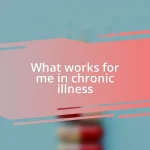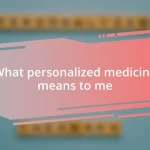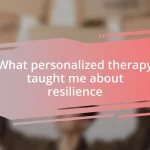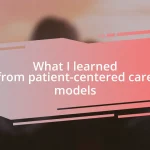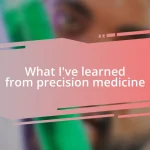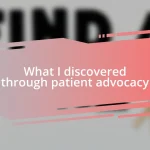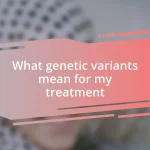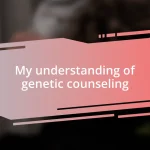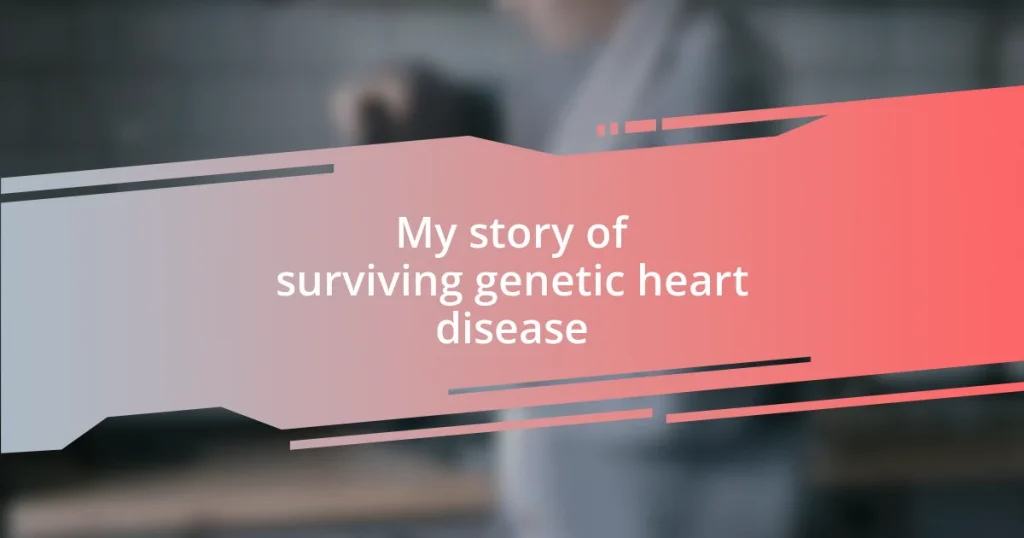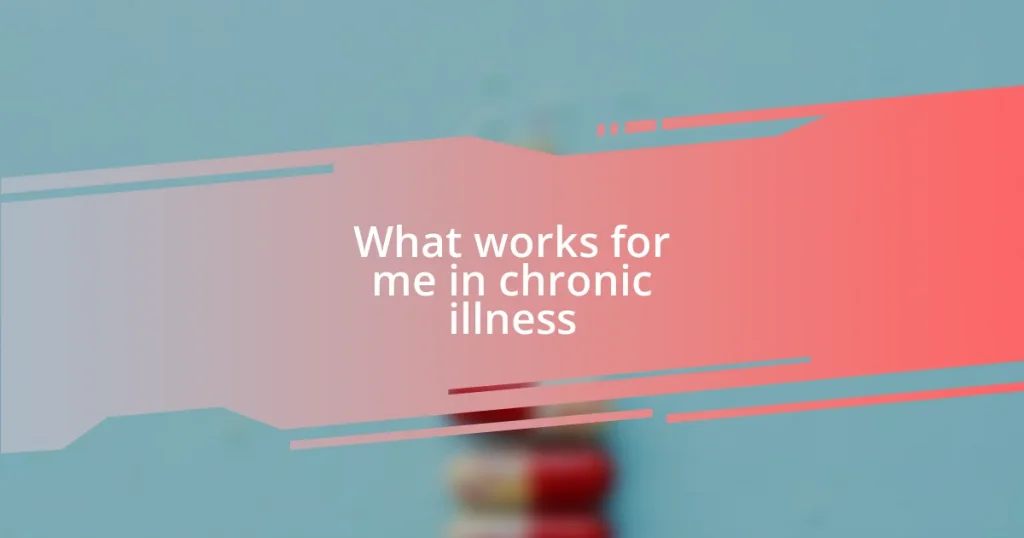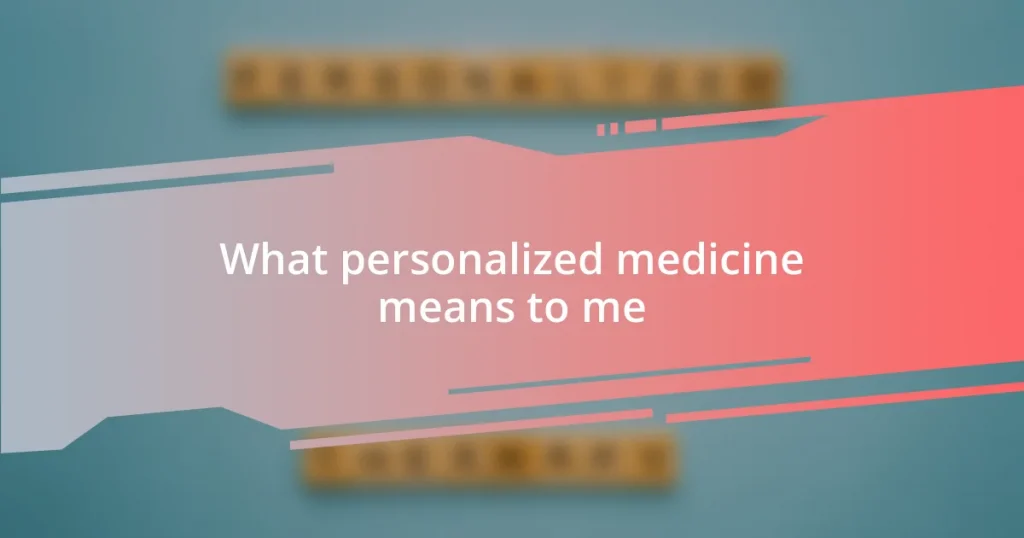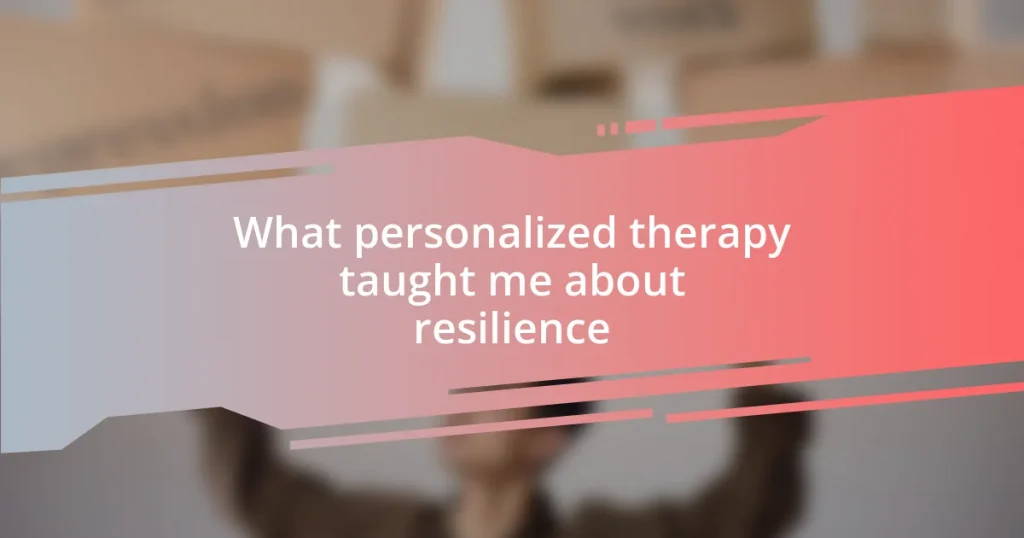Key takeaways:
- Discovery of genetic heart disease in family lineage led to personal anxiety and the need for understanding health implications.
- Diagnosis of familial hypertrophic cardiomyopathy involved initial symptoms, medical evaluations, and emotional turmoil of uncovering family health secrets.
- Effective management included a combination of lifestyle changes, medications, support networks, and emotional coping strategies for holistic health.
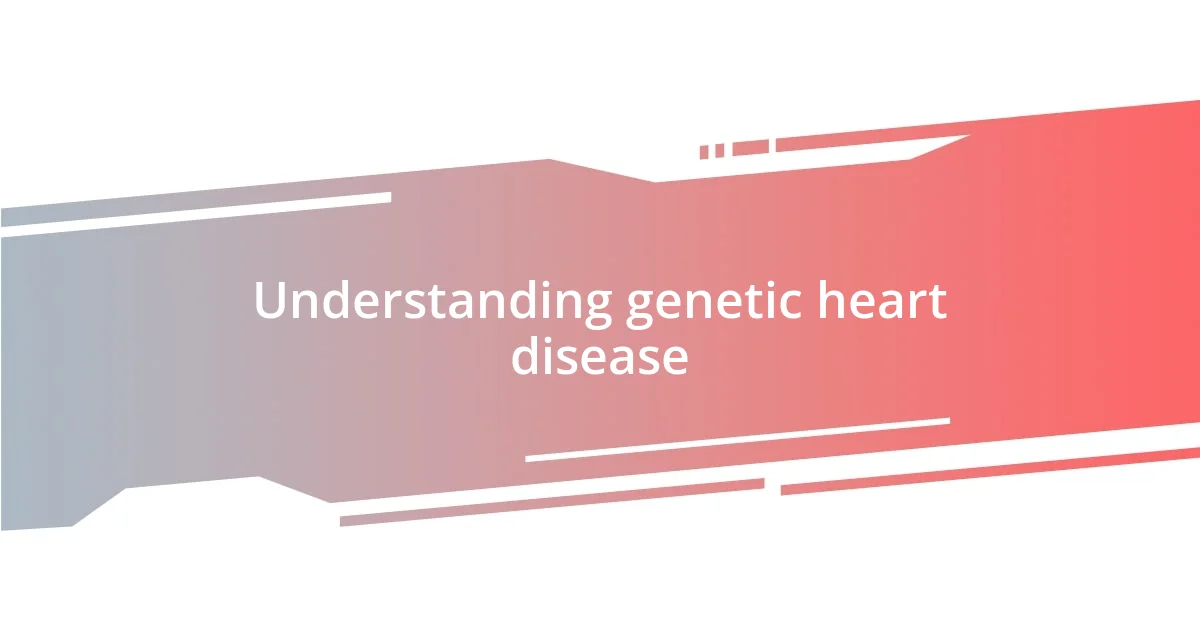
Understanding genetic heart disease
Genetic heart disease is a condition where inherited mutations affect the structure and function of the heart. It struck me on a personal level when I learned that my family lineage bore various heart issues, which made me wonder: How much do our genetics dictate our health? Understanding the nuances of these diseases became crucial for me; it felt like unraveling a mystery that was etched in my DNA.
As I dug deeper, I discovered that conditions like hypertrophic cardiomyopathy and familial hypercholesterolemia often go undiagnosed for years, leaving families in the dark. The realization that my own heart could be a ticking time bomb made my heart race in anxiety and fear. Have you ever found yourself staring at a family photo, pondering whose genetic quirks you might have inherited? It’s an unsettling thought, especially when you can trace back patterns of illness through generations.
Communicating with doctors helped me grasp that genetic heart diseases can sometimes be managed effectively with lifestyle changes and medications. However, the emotional weight still lingers—every time I feel a pang in my chest, my mind flits to the darker genetic possibilities. I learnt that awareness and proactive measures can be empowering, but the shadow of uncertainty remains. Isn’t it fascinating how our genetic makeup shapes not just our health, but our very perception of life?
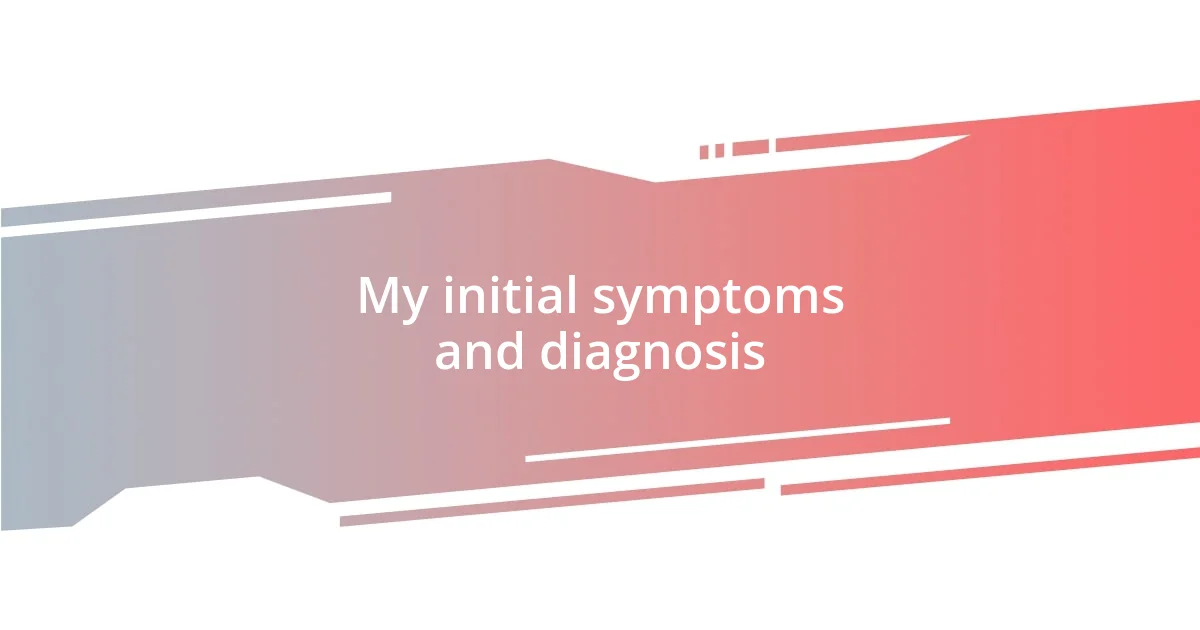
My initial symptoms and diagnosis
As I look back on those initial signs, I remember the sensation that felt like a weight resting heavily on my chest. Even though I brushed it off at first, thinking it was just anxiety or perhaps fatigue, something deep down urged me to seek help. It wasn’t until one evening, while jogging, that I struggled to catch my breath and realized that my symptoms were more than just typical weariness.
When I finally visited my doctor, the tests began without much delay. Electrocardiograms and echocardiograms were just the start. Each beep and image was a puzzle piece that could lead to answers. I specifically recall the doctor’s somber tone when he mentioned “genetic factors”—those words sent chills down my spine, making the diagnosis feel all the more real.
With the diagnosis of familial hypertrophic cardiomyopathy confirmed, my emotions were a whirlwind. I felt relief in knowing the cause of my symptoms, but the weight of this knowledge felt burdensome. It was like I had unlocked a family secret that I wished I hadn’t known. Have you ever had that mix of dread and relief wash over you? The kind of revelation that makes you question everything, yet somehow provides clarity?
| Initial Symptoms | Diagnosis Process |
|---|---|
| Heavy feeling in chest | Doctor’s appointment for evaluation |
| Shortness of breath while exerting | Electrocardiogram (EKG) and echocardiogram tests |
| Increased heart rate | Discussion about genetic factors and family history |
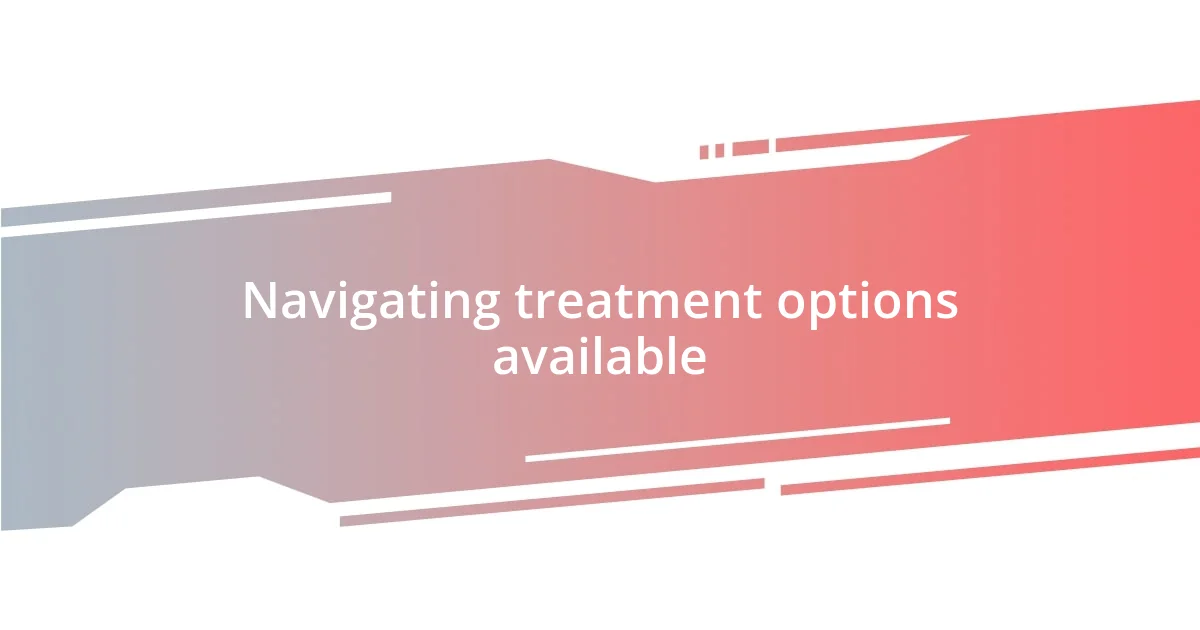
Navigating treatment options available
When it came to navigating the treatment options for my genetic heart disease, I found myself bombarded with choices. Each path forward felt like a daunting mountain, but I learned that breaking it down into manageable steps made the journey less overwhelming. After extensive discussions with my healthcare team, I understood that there were both medical and lifestyle approaches available to me.
Here are some of the pivotal treatment options I considered:
– Medications: Beta-blockers and ACE inhibitors can help manage symptoms and improve heart function.
– Lifestyle Changes: Incorporating a heart-healthy diet and regular exercise proved essential for maintaining my overall health.
– Genetic Counseling: Meeting with a genetic counselor allowed me to understand my family’s history and get guidance on the implications for my loved ones.
– Surgical Interventions: In more severe cases, options like septal myectomy or implantable cardioverter-defibrillators (ICDs) could be viable.
– Regular Monitoring: Keeping close contact with cardiologists ensured that any changes in my condition were tracked promptly.
The path was not straightforward; some decisions felt like walking a tightrope. I vividly remember contemplating the idea of a heart procedure, heart racing with anxiety and hope. I feared the unknown yet also craved the chance to live without limitations. Through open discussions with my doctors and a strong support system, I realized that choosing one option didn’t mean I couldn’t explore others later. Each decision was a step—sometimes a leap—toward reclaiming my life in the wake of this genetic diagnosis.
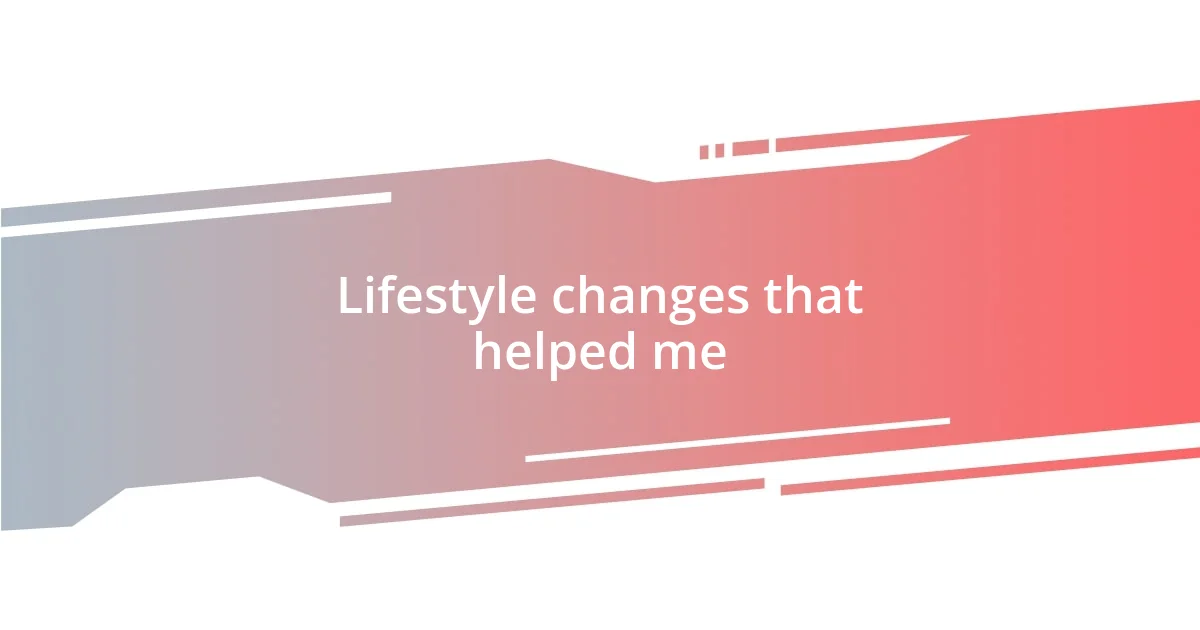
Lifestyle changes that helped me
Making significant lifestyle changes became a cornerstone in my journey towards managing my genetic heart disease. I remember the day I swapped sugary snacks for fruits and nuts; it felt empowering. It wasn’t just about losing weight—what I discovered was how much better I felt physically and mentally. Have you ever noticed how something as simple as choosing an apple over a cookie can shift your entire day’s energy? Since then, I’ve found that nourishing my body plays a crucial role in how I cope with this condition.
When it came to exercise, I had to redefine what “active” meant for me. Initially, the thought of a rigorous workout scared me, but I soon discovered the joy in gentle yoga and daily walks. I can still recall the first time I completed a mile without feeling winded; it was exhilarating! Everyone’s body responds differently, so finding what works for you is vital. Now, those walks not only keep my heart healthier, but they also provide a mental escape, allowing me to reflect and clear my head.
Social connections became essential too. Surrounding myself with grounding, positive influences created a strong support network. I began attending local support groups, which surprised me with the sense of camaraderie they offered. Have you ever shared your struggles with someone who truly gets it? It was in those moments that I learned I wasn’t alone; others shared the same fears and triumphs, offering insights and encouragement that enriched my journey. This experience taught me that healing isn’t just a solo endeavor; it thrives in community, connection, and shared experiences.
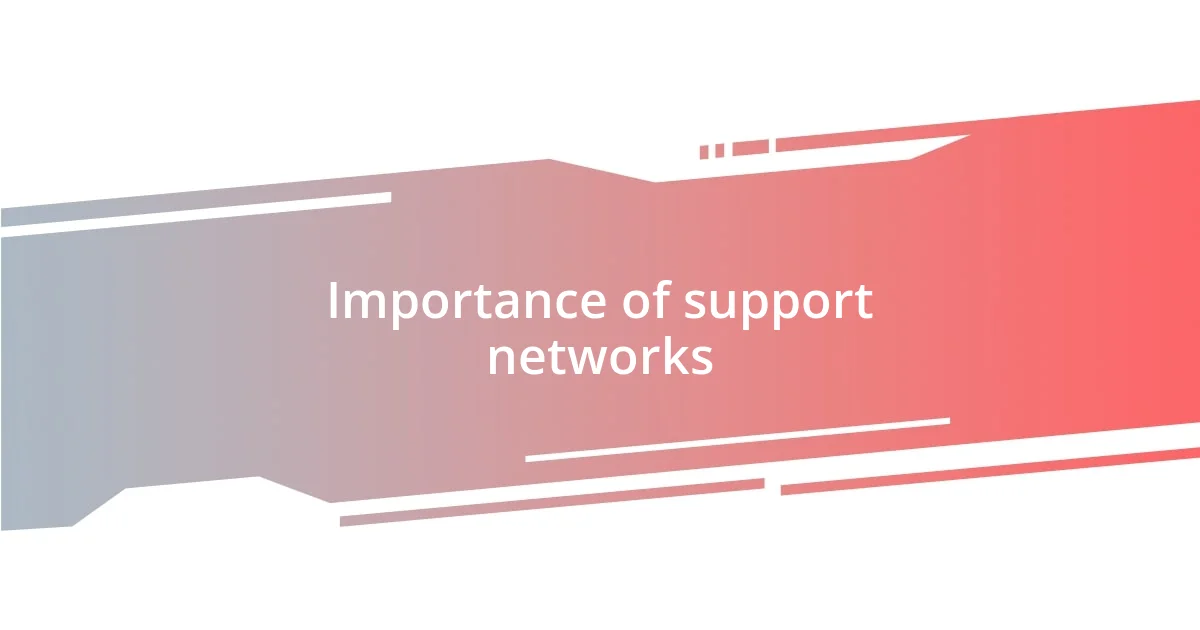
Importance of support networks
Support networks played a crucial role in my journey with genetic heart disease. I’ll never forget the day I reached out to a friend who had been through a similar experience. Just hearing her share her fears and victories made me feel less isolated. It dawned on me that having people who truly understand what I was going through is invaluable. Have you ever shared an experience with someone, only to find that your fears suddenly feel lighter?
The connections I cultivated through support groups became a lifeline. In these spaces, I encountered individuals who articulated the same anxieties I had been wrestling with alone. One evening, after sharing my story during a group meeting, a fellow member came up to me and said, “Your journey resonates so much with me, thank you for being brave.” That moment reminded me of the power of vulnerability in healing. It’s fascinating how the energy shifts when we come together; suddenly, you’re part of a tapestry of resilience and understanding.
Even my family played an influential role. When I opened up about my struggles, it allowed them to become more proactive in supporting me. I still recall my mother meticulously researching heart-healthy recipes, determined to improve our family’s meals. Her zeal not only strengthened our bond but also showed me how supportive networks extend beyond peers; they encompass loved ones who share in both the challenges and the victories. Knowing that I had a team rallying around me provided a sense of courage in facing whatever lay ahead.
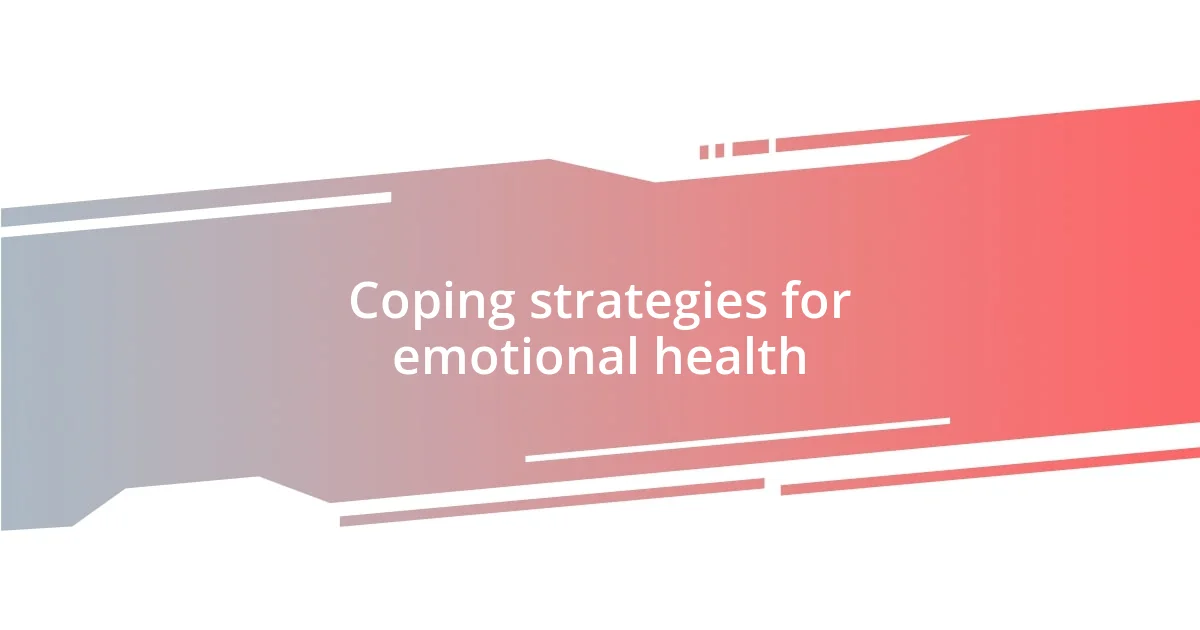
Coping strategies for emotional health
Emotional health is delicate, especially when coping with a genetic heart disease. Journaling became my sanctuary, a space where I could pour out every worry and fear. I vividly remember one night, feeling overwhelmed, I wrote until my hand hurt. That release transformed my anxiety into clarity, helping me understand what I was truly feeling. Have you ever tried writing to see your thoughts more clearly? I found that once I saw my feelings on paper, they didn’t seem so daunting anymore.
Mindfulness practices have also become invaluable in my routine. I started with just five minutes of deep breathing each morning, and soon, it created an oasis of calm in my day. During a particularly stressful moment, I remember closing my eyes and focusing solely on my breath; it felt like I was stepping away from chaos into a tranquil bubble. Don’t you agree that finding a little peace in the hustle and bustle is essential? This practice allowed me to cultivate an awareness of my emotions instead of being swept away by them.
Letting myself feel was another crucial strategy. I often caught myself suppressing emotions, thinking it would make me stronger. But there was a night, very late, when I simply allowed myself to cry while listening to my favorite music. It felt cathartic and freeing. How often do we forget that feeling our emotions—both good and bad—can actually be part of healing? Embracing vulnerability not only taught me resilience but also deepened my self-connection. I now see emotional health as an integral part of my journey, constantly evolving and deserving my attention.
